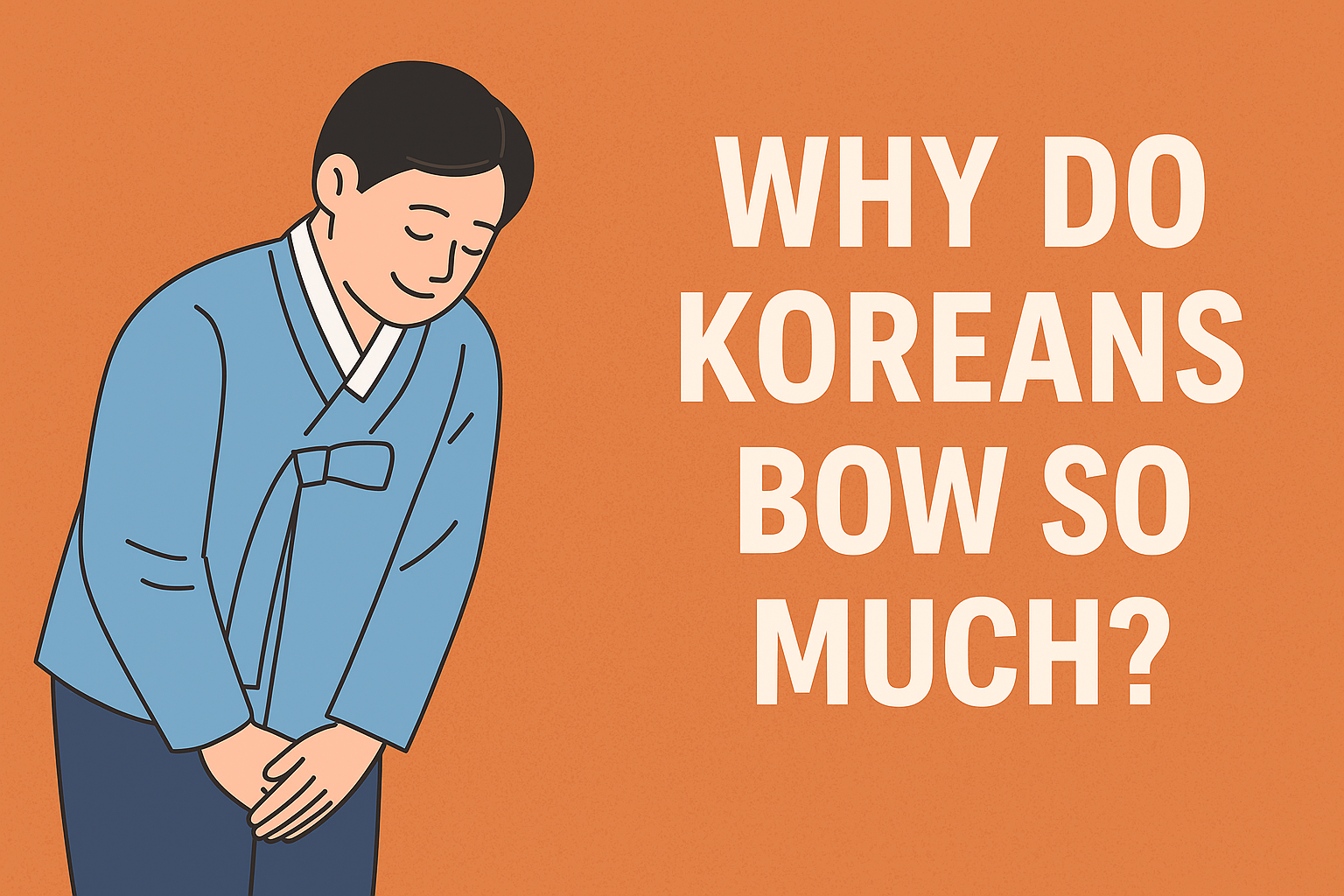Why Do Koreans Bow So Much? A Deep Dive into Korean Greeting Culture
Keywords: Korean bowing, Korean greeting culture, why Koreans bow, Korean etiquette, Korean customs
Introduction: More Than Just a Nod
Have you ever noticed how often Koreans bow—in movies, K-dramas, or even in daily life?
To a foreigner, it might seem excessive. But for Koreans, bowing isn’t just a habit—it’s a deeply rooted cultural language.
The Historical Roots: Confucianism and Respect
The origins of bowing in Korea are heavily tied to Confucianism, a philosophy introduced from China that emphasizes respect, hierarchy, and social harmony.
- Age and status matter: Confucianism teaches that age and social rank should be respected.
- Physical gesture of humility: A bow shows that you’re placing the other person above yourself.
That’s why even modern Koreans bow to elders, bosses, or even to empty rooms as a sign of respect in ceremonies.
Types of Bows in Korea
| Type of Bow | Name (Korean) | Context | Degree of Bow |
|---|---|---|---|
| Light Bow | 가벼운 인사 | Casual greeting | 15° |
| Formal Bow | 정중한 인사 | Meeting elders, customers | 30° |
| Deep Bow | 큰절 (Keun-jeol) | Weddings, funerals, holidays | 45° or more |
| Seated Bow | 앉아서 절하기 | Religious or ritual events | Full-body |
Bowing in Modern Korea: Not Just for the Old Days
Even in today’s high-tech Korea, bowing hasn’t faded. You’ll see it:
- At convenience stores when entering or leaving
- Between students and teachers
- During apologies or thanks
- On national holidays like Seollal (Lunar New Year), when children bow to elders for blessings
💡 Interestingly, Koreans even bow on the phone—a small nod out of habit, even though the other person can’t see it!
Why It Feels Strange to Foreigners
Most Western cultures are egalitarian and informal, so bowing can seem submissive or awkward.
But for Koreans, it’s the opposite: not bowing is rude.
Think of it like the Korean version of a handshake—but with social depth and emotion.
Final Thoughts: More Than Just a Gesture
Bowing is not just a cultural quirk. It’s a mirror of Korea’s values: respect, harmony, and mindfulness of others.
So the next time you’re in Korea—or watching your favorite K-drama—and see someone bow, you’ll know:
They’re not just being polite.
They’re speaking the silent language of Korean culture.
